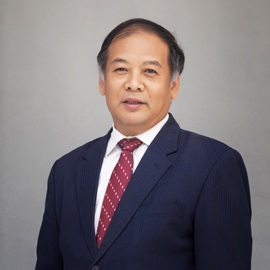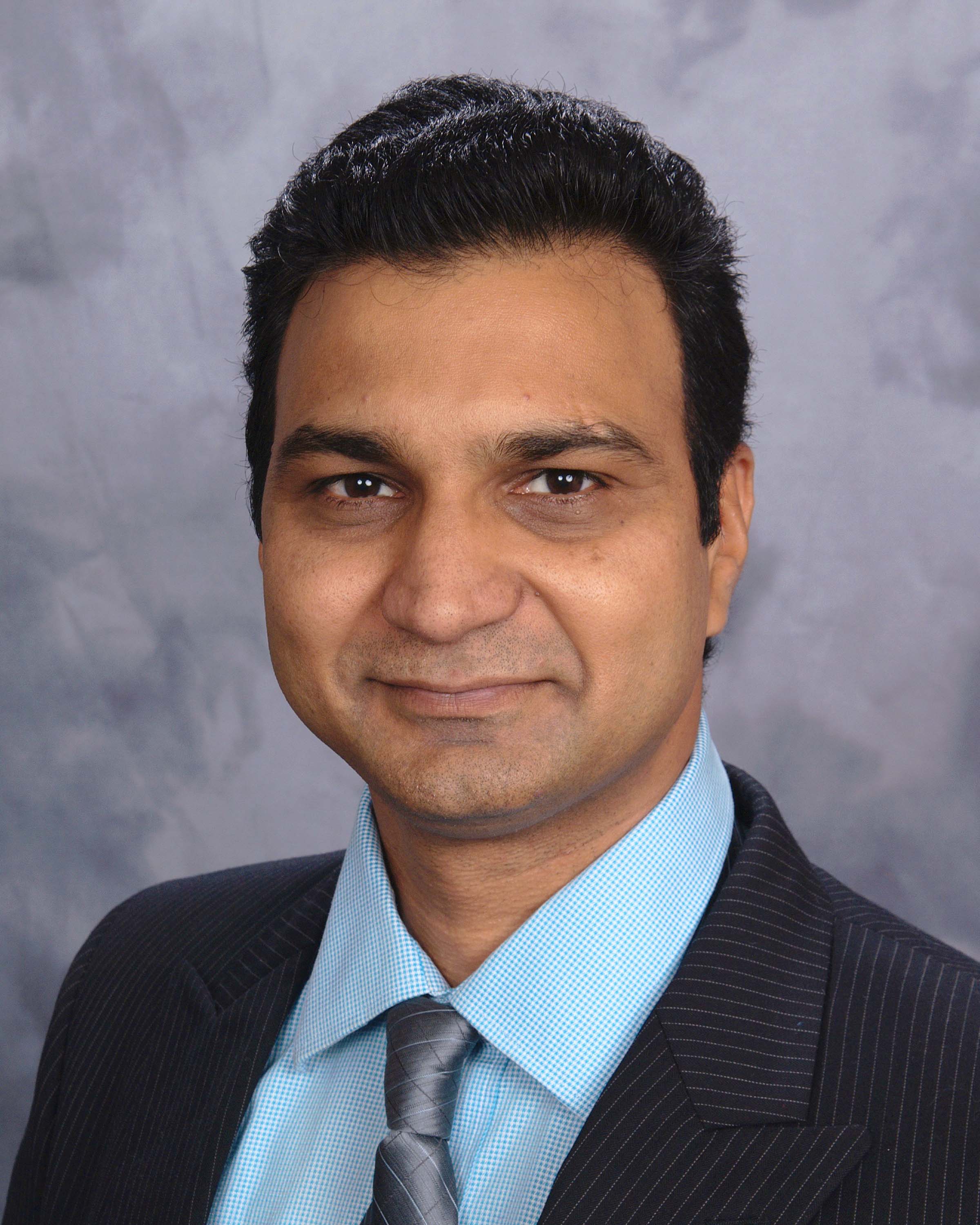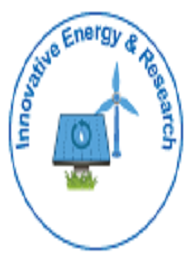Theme: Latest Leading-Edge Discoveries and Emphasize Current Challenges in Battery and Fuel Cell Technology
Battery Tech 2022
Conference Series LLC Ltd. welcomes all the participants across the globe to participate in the "4th International Conference on Battery and Fuel Cell Technology" during December 05-06, 2022 in Paris, France. It includes keynote presentations, Oral talks, Video Presentations and E-poster Presentations. This Battery Tech 2022 Conference is based on the theme “Latest Leading-Edge Discoveries and Emphasize Current Challenges in Battery and Fuel Cell Technology”
This Battery Tech 2022 will be hosted at the Millennium Hotels Charles de Gaulle Airport which is easily accessible from the airport, train station or city centre.
Track 1: General Aspects of Battery
Battery is a device consisting of one or more electrochemical cells with external connections connected to energize the electrical devices. A battery has a cathode, and an anode. The name "battery" commonly denoted to a device composed of multiple cells, yet the procedure has advanced to additionally include devices consisting of a single cell. Batteries are categorized into primary and secondary types. Primary batteries such as alkaline battery, leclanché cell, lithium battery are irreversibly transforming chemical energy to electrical energy. When the power inside the reactants got exhausted, these batteries such as primary does not restore energy easily. Secondary batteries such as flow battery, fuel cell, lead acid battery etc. can be recharged; that is, they can reverse their chemical reactions by supplying electrical energy to the battery, by restoring their original composition.
Recommended Battery conferences | Lithium battery conferences | Battery and Fuel Cell Technology Conferences.
Track 2: Primary Cell Batteries
Primary batteries, or primary cells, generate power when they are connected immediately. Primary cells are mostly or commonly used in movable devices that have low current drain, are used only periodically, or are used well away from an different power source, such as in alarm and communication circuits where other electricity is periodically obtainable. Disposable primary cells cannot be constantly recharged, since the chemical reactions are not easily reversible and the materials which are active cannot return to their original forms. The manufactures of Battery mention against trying to recharge primary cells. In general, these have higher energy densities than rechargeable batteries, but disposable batteries doesn’t perform well under high-drain applications with loads under 75 ohms (75 Ω). Common types of disposable batteries include zinc–carbon batteries and alkaline batteries.
Recommended Battery conferences | Lithium battery conferences | Battery and Fuel Cell Technology Conferences
Track 3: Secondary Cells Batteries
Secondary batteries, also known as secondary cells, or rechargeable batteries, must be charged before first use; they are usually assembled with active materials in the discharged state. Rechargeable batteries are (re)charged by applying electric current, which reverses the chemical reactions that occur during discharge/use. Devices to supply the appropriate current are called chargers. The oldest form of rechargeable battery is the lead–acid battery. This technology contains liquid electrolyte in an unsealed container, requiring that the battery be kept upright and the area be well ventilated to ensure safe dispersal of the hydrogen gas it produces during overcharging. The lead–acid battery is relatively heavy for the amount of electrical energy it can supply. Its low manufacturing cost and its high surge current levels make it common where its capacity (over approximately 10 Ah) is more important than weight and handling issues.
Recommended Battery conferences | Lithium battery conferences | Battery and Fuel Cell Technology Conferences.
Track 4: Design and Technology of Batteries
The internal function of a battery are typically contained within a metal or plastic case. Under this metal there is a cathode, which connects to the positive terminal, and an anode, which connects to the negative terminal. These constituents, more generally known as electrodes, occupy most of the space in a battery and are placed where the chemical reactions occur. A partition creates a barrier between the cathode and anode, preventing the electrodes from moving while allowing electrical charge to flow freely between them. The medium that allows the electric charge to flow between the cathode and anode is known as the electrolyte. Finally, the collector conducts the charge to the outside of the battery and through the load.
Recommended Battery conferences | Lithium battery conferences | Battery and Fuel Cell Technology Conferences
Track 5: Operation Problems in Batteries
As batteries are widely used it has lots of various problems. In lithium batteries the failures are depends on over-voltage, state of Charge, temperature effects if the charging voltage is increased beyond the recommended upper cell voltage, typically 4.2 Volts, excessive current flows giving rise to two problems such as lithium plating, overheating. Temperature effects both in low temperature operation and high temperature operation and also thermal runaway.
Recommended Battery conferences | Lithium battery conferences | Battery and Fuel Cell Technology Conferences
Track 6: Applications of Batteries
Presenting large batteries for stationary applications, e.g. energy storage, and also batteries for hybrid vehicles or different tools. Secondary Battery such as Lithium batteries are used in various types of mobile devices, including communication equipment, computers, entertainment devices, power tools, toys, games, lighting and medical devices. Mostly in transportation the lithium secondary batteries stimulated to reduce carbon emissions in the Kyoto Protocol and demand for eco-friendly vehicles through CARB(California Air Resource Board). The Toyota Prius was the first commercial HEV. This vehicle uses NIMH batteries for power sources and presents a solution to the problem of high power density.
Recommended Battery conferences | Lithium battery conferences | Battery and Fuel Cell Technology Conferences
Track 7: Latest Developments of Batteries
New Developments in Battery Technology such as Electric cars discusses the use of batteries as motive power sources in electric vehicles, as well as temporary energy storage in hybrid and solar powered vehicles. Lithium-Metal-Polymer battery contains no liquid or paste electrolyte. The electrolyte is in the form of a polymer film, resulting in a lightweight battery that is rugged, required little maintenance, and can tolerate extremes of temperatures in service lives as long as 10 years. A new development offered by Proctor & Gamble, not yet on the market. It is low-power electrolysis technology that can remove pathogens from small or large quantities of water. The technology is offered for licensing through yet2.com as a TechPak and even more.
Recommended Battery conferences | Lithium battery conferences | Battery and Fuel Cell Technology Conferences.
Track 8: Batteries in Renewable Sources and Grid Balancing
Nickel Metal Hydride (NiMH) batteries have been in use for many years in consumer and automotive applications due to their superior energy density and environmentally friendly attributes. The demand for Sodium Sulphur batteries as an effective means of stabilizing renewable energy output and providing ancillary services is expanding. U.S. utilities have deployed 9 MW for peak shaving, backup power, firming wind capacity, and other applications. Grid storage is probably the battery industry’s toughest challenge yet. More often it seems that in many projects happening now, energy storage systems are expected to do not one, but often several things. It’s partly the result of how the electricity grids are regulated, where storage is too expensive to be solely a generation or a distribution asset, so its value is extracted by measuring out a multiplicity of different services and functions, over the system’s lifetime.
Recommended Battery conferences | Lithium battery conferences | Battery and Fuel Cell Technology Conferences
Track 9: Nanotechnology in Advance Batteries
Nano batteries are fabricated batteries employing technology at the Nano scale, a scale of microscopic particles that amount less than 100 nanometres or 10−7 meters. In contrast, out-dated Li-Ion technology uses active materials, such as cobalt-oxide, with atoms or particles that range in size between 5 and 20 micrometres (5000 and 20000 nanometres - over 100 times Nano scale). It is hoped that Nano-engineering will improve many of the inadequacies of present battery technology, such as recharging time and battery 'memory'. Several companies are exploring and emerging these technologies. In March 2005, Toshiba announced that they had a new Lithium-Ion battery consists a nanostructured lattice at the positive and negative terminals that permits the battery to recharge a astonishing eighty times quicker than previously. Prototype models were able to charge to eighty per cent capacity in one minute, and were one hundred per cent recharged after 10 minutes.
Recommended Battery conferences | Lithium battery conferences | Battery and Fuel Cell Technology Conferences
Track 10: Global Outlook of Fuel Cell
A fuel cell main function is to that transforms the chemical energy from a fuel into power through a chemical reaction of positively charged hydrogen ions with oxygen or alternative oxidizing agent. Fuel cells are dissimilar from batteries in that they require a constant source of fuel and oxygen or air to withstand the chemical reaction, while in a battery the chemicals existing in the battery react with each other to produce an electromotive force. Fuel cells can generate electrical energy continuously for as long as these inputs are delivered. Fuel cells come in multiple types; however, they all work in the same common way. They are made up of three contiguous divisions: the anode, the electrolyte, and the cathode. Two chemical reactions occur at the boundaries of the three unlike divisions. The net outcome of the two reactions is that fuel is disbursed, water or carbon dioxide is produced, and an electric current is generated, which can be used to power electrical devices, normally referred to as the load.
Recommended Battery conferences | Lithium battery conferences | Battery and Fuel Cell Technology Conferences
Track 11: Classifications of Fuel Cell
Fuel cells are categorized mainly by the kind of electrolyte they employ. This classification determines the kind of electro-chemical reactions that take place in the cell, the kind of catalysts required, the temperature range in which the cell operates, the fuel required, and other factors. These characteristics, in turn, affect the applications for which these cells are most suitable. There are several types of fuel cells currently under development, each with its own advantages, limitations, and potential applications. The following types of fuel cells are Polymer electrolyte membrane fuel cells, direct methanol fuel cells, alkaline fuel cells, Phosphoric acid fuel cells, Molten carbonate fuel cells, Solid oxide fuel cells, Reversible fuel cells.
Recommended Battery conferences | Lithium battery conferences | Battery and Fuel Cell Technology Conferences
Track 12: Applications of Fuel cells
Fuel Cell at present outlines fuel cells for transportation as any units that deliver propulsive electricity to a vehicle, directly or indirectly. Forklift trucks and other goods control vehicles such as airport luggage automobiles, Two- and three-wheeler automobiles such as scooters, light duty vehicles. Portable fuel cells as those which are made into products that are designed to be moved. These include military applications Auxiliary Power Units for the leisure and trucking industries, portable products such as torches, vine trimmers, small personal electronics such as mp3 players, cameras etc, large personal electronics namely laptops, printers, radios, education kits and toys.
Recommended Battery conferences | Lithium battery conferences | Battery and Fuel Cell Technology Conferences
Track 13: Recent Advancements in Fuel Cell Technology
Fuel Cell Technology has been at its epitome in the advancements mainly regarding hydrogen fuel cells have been a dream energy source, merging the large quantity of hydrogen as an element with the clean alteration of it to and from a source of stored energy. Advanced resources based hydrogen storage technologies and abridged cost of advanced compacted hydrogen storage systems. Hydrogen fuel cells for vehicles create an fascinating contender to pure electric vehicles (fuel cells create electricity, so many components of the vehicle are similar).
Recommended Battery conferences | Lithium battery conferences | Battery and Fuel Cell Technology Conferences
Track 14: Supercapacitors vs Batteries
A super capacitor (SC) (sometimes ultra capacitor, formerly electric double-layer capacitor (EDLC)) is a high-capacity electrochemical capacitor with capacitance values very much higher than different capacitors (but lower voltage limits) that bridge the gap amongst electrolytic capacitors and rechargeable batteries. They typically store 10 to 100 times more energy per unit volume or mass than electrolytic capacitors, can accept and deliver charge much faster than batteries, and tolerate many more charge and discharge cycles than rechargeable batteries. They are however 10 times larger than conventional batteries for a given charge.
Super capacitors are used in applications requiring many rapid charge/discharge cycles rather than long term compact energy storage: within cars, buses, trains, cranes and elevators, where they are used for regenerative braking, short-term energy storage or burst-mode power delivery. Smaller units are used as memory backup for static random-access memory (SRAM).
Recommended Battery conferences | Lithium battery conferences | Battery and Fuel Cell Technology Conferences
Track 15: Various Energy Materials
Research into hydride materials for energy applications typically focuses on enhancing gravimetric storage density and ion transport of the materials. However, the requirements for stationary applications such as fuel cells can be significantly different and amenable to a broader class of potential materials. Multiple geophysical and social pressures are forcing a shift from fossil fuels to renewable and sustainable energy sources. To effect this change, we must create the materials that will support emergent energy technologies. Solar energy is the utmost priority to develop photovoltaic cells that are efficient and cost effective. Department of Materials Science and Engineering, Stanford University, conducting extensive research on Photovoltaic, Energy storage and Hydrogen storage to meet global Energy requirements. The global market value of components for PEM fuel cell membrane electrode assembly (MEA) as BCC report is estimated $383 million in 2010. This market is expected to grow at a 20.6% compound annual growth rate (CAGR) over the 5-year forecast period to reach $977 million in 2015.
Recommended Battery conferences | Lithium battery conferences | Battery and Fuel Cell Technology Conferences
Track 16: Super Capacitors
The mechanisms of the super capacitor can be quickly charged and has very high density of power. It had a different storage mechanism and stores electrostatically on its surface and has no chemical reactions complex in it. The cost of a super capacitor exceeds that of the battery materials because of the supercapacitor materials such as graphene which is a high performing material. Both batteries and super capacitors are helpful in the future needs as the batteries rose by 5% whereas the super capacitors by 50-60% of its charge.
Recommended Battery conferences | Lithium battery conferences | Battery and Fuel Cell Technology Conference
- Battery Tech 2018 Report:
- Conference Series llc LTD is organizing international conference 3rd International Conference on Battery and Fuel Cell Technology during September, London, UK.
- Battery Tech 2018 will impact an attractive moment to meet the people in the research field and development; therefore it takes a delight in opening a gate to meet the ability in the field, young researchers and potential speakers. The conference also includes essential topics on technologies related to batteries and fuel cells, especially on what we accomplished so far and what we will succeed in future. Our conference is going to deliver numerous keynote sessions, plenary speeches and poster presentations by the eminent scientists and students in the field of batteries and fuel cells.
- Battery Tech 2017Report:
- Conference Series is organizing international conference 2nd International Conference on Battery and Fuel Cell Technology during July 27-28, Rome, Italy.
- Battery Tech 2017 will impact an attractive moment to meet the people in the research field and development; therefore it takes a delight in opening a gate to meet the ability in the field, young researchers and potential speakers. The conference also includes essential topics on technologies related to batteries and fuel cells, especially on what we accomplished so far and what we will succeed in future.
- Battery Tech 2016 Report:
- ConferenceSeries is organizing international conference International Conference on Battery and Fuel Cell Technology during December 8-9, 2016 at Dubai, UAE.
- The main theme of the conference is “To Share the Latest Leading-Edge Discoveries and Emphasize Current Challenges in Battery and Fuel Cell Technology”.
- Battery Tech 2016 is the platform to discuss and learn how the technology in Batteries and fuel cells had been established globally in recent years. This conference mainly focuses to gather all the market performers and professionals of its kind under the same roof at the same time; it offers an effective platform to develop this fast growing market and to accentuate the challenges in these electrochemical power sources.
- Battery Tech 2018 Report:
- Conference Series llc LTD is organizing international conference 3rd International Conference on Battery and Fuel Cell Technology during September, London, UK.
- Battery Tech 2018 will impact an attractive moment to meet the people in the research field and development; therefore it takes a delight in opening a gate to meet the ability in the field, young researchers and potential speakers. The conference also includes essential topics on technologies related to batteries and fuel cells, especially on what we accomplished so far and what we will succeed in future. Our conference is going to deliver numerous keynote sessions, plenary speeches and poster presentations by the eminent scientists and students in the field of batteries and fuel cells.
- Battery Tech 2017Report:
- Conference Series is organizing international conference 2nd International Conference on Battery and Fuel Cell Technology during July 27-28, Rome, Italy.
- Battery Tech 2017 will impact an attractive moment to meet the people in the research field and development; therefore it takes a delight in opening a gate to meet the ability in the field, young researchers and potential speakers. The conference also includes essential topics on technologies related to batteries and fuel cells, especially on what we accomplished so far and what we will succeed in future.
- Battery Tech 2016 Report:
- ConferenceSeries is organizing international conference International Conference on Battery and Fuel Cell Technology during December 8-9, 2016 at Dubai, UAE.
- The main theme of the conference is “To Share the Latest Leading-Edge Discoveries and Emphasize Current Challenges in Battery and Fuel Cell Technology”.
- Battery Tech 2016 is the platform to discuss and learn how the technology in Batteries and fuel cells had been established globally in recent years. This conference mainly focuses to gather all the market performers and professionals of its kind under the same roof at the same time; it offers an effective platform to develop this fast growing market and to accentuate the challenges in these electrochemical power sources.
Conference Highlights
- General Aspects of Battery
- Primary Cell Batteries
- Secondary Cells Batteries
- Design and Technology of Batteries
- Operation Problems in Batteries
- Applications of Batteries
- Latest Developments of Batteries
- Batteries in Renewable Sources and Grid Balancing
- Nanotechnology in Advance Batteries
- Global Outlook of Fuel Cell
- Classifications of Fuel Cell
- Applications of Fuel cells
- Recent Advancements in Fuel Cell Technology
- Supercapacitors vs Batteries
- Various Energy Materials
To share your views and research, please click here to register for the Conference.
To Collaborate Scientific Professionals around the World
| Conference Date | December 05-06, 2022 | ||
| Sponsors & Exhibitors |
|
||
| Speaker Opportunity Closed | |||
| Poster Opportunity Closed | Click Here to View | ||
Useful Links
Special Issues
All accepted abstracts will be published in respective Our International Journals.
Abstracts will be provided with Digital Object Identifier by


















